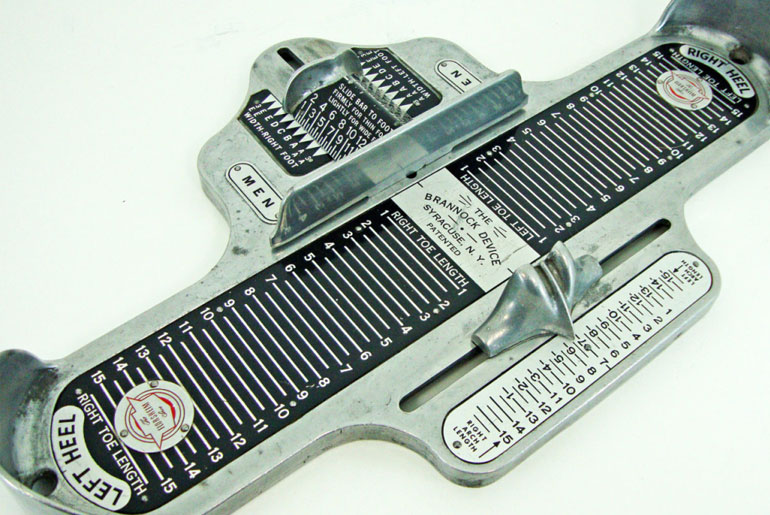
The Brannock Device: A 90-Year Monopoly
The Brannock Device (pictured above) is one of those common items you see all the time, but never think about. Simple and effective, it was invented by Charles Brannock in 1927. Today, you can find them anywhere shoes are sold, always available to give parents a rough idea of the shoe sizes they should be testing to fit their rapidly growing children.
As a tool, the Brannock device is pretty unexciting. However, the story (or supposed story) behind its early production is what I find strategically interesting.
Solid Steel
When the device was first being sold, businessmen that new Brannock recommended he make is device out of plastic instead of steel.
Having been raised on plastic products, your initial reaction this might be “Of course, plastic is much cheaper than steel. He could decrease costs and speed up production by changing the material.” But this was the 1930s and plastic molding technology was only about a decade old. Very few companies worked with the substance and it was nowhere near as economical or functional as it is today.
So why did people recommend plastic?
Well, there are three strategies manufacturers typically use to make more money: 1) make your products with cheaper materials, 2) design products to break easily or have “planned obsolescence”, or 3) use cheaper materials AND hope your products break sooner.
People wanted Brannock to use the second strategy. His device, which would regularly endure the weight of a grown adult, was a product that had a perfect excuse to break frequently and need replacing. No one would have thought twice if the devices frequently cracked in half. And since the Brannock device was the first product to hit the niche, foot-measuring market, shoe stores had no other options.
Conversely, using steel seemed like a terrible business decision. Steel versions of the device could last a decade before being worn out or damaged enough to need replacing. If Brannock wanted to sell more of his invention, he needed to pick a material that resulted in repeat business.
Unflankable Brannock
Ultimately, Brannock refused to use plastic for this devices, insisting they be made out of durable steel—a tradition that’s been kept for the past 90 years.
So why didn’t he use plastic in an effort to be more successful?
The answer to that starts with another question: When was the last time you saw a foot-measuring tool that wasn’t a Brannock device?
Consider Brannock’s position. As useful as his device was, it was not essential to shoe-sellers. Ultimately, it was something that was convenient for customers. If the device had been unreliable or cost shoe sellers too much money, they could simply stop using it. Second, his device was not complex and it did not grant him a patent on measuring feet. If his device had been made cheaply, it would have left a market opening for a competitor to make a higher-quality version.
By ensuring that the first iteration of the device was made to the highest quality, Brannock locked the market. Yes, he could have extracted more money from shoe sellers if he tried to sell more devices, but doing so would have invited competition. Although total profits would have increased, he would have ended up sharing those profits with other companies.
Brannock thought long term. By making his product the best it could be and by ensuring his customers would rarely need replacements, he left any would-be competitors without a foothold or opening to challenge his cornering of the market.
Then again, maybe Brannock was not the shrewd businessman I’m making him out to be. Maybe he was just trying to be ethical with his product quality. Either way, he put himself in a fantastic position to control his niche market for almost a century.
The Takeaway
Although it’s unlikely you’ll have the same kind of product opportunity as Brannock, his device gives an essential lesson in business priorities. The most important part of product development and marketing is knowing your product’s place in the world.
For Brannock, creating a new market and immediately monopolizing it was the key to long-term success. Profitability, normally essential to a company’s success in a competitive market, can take a backseat if you can embrace a product philosophy that prevents competition. Don’t just think about trying to secure the most business, think about the competition your decisions create. A smaller pie can be more food if you get to keep it all.